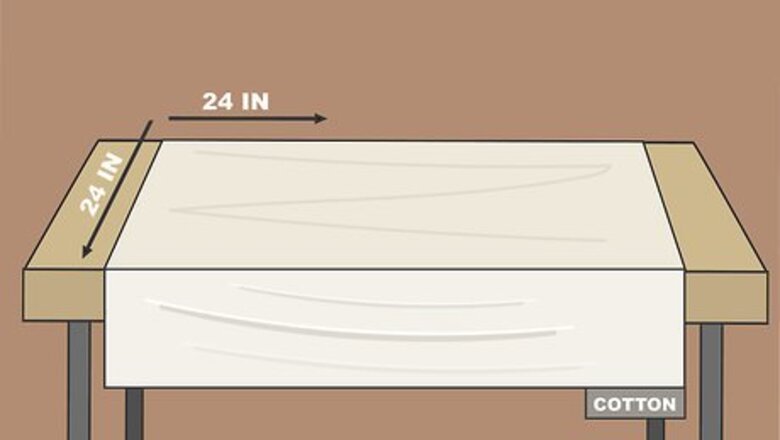
views
Making Socks from Fabric
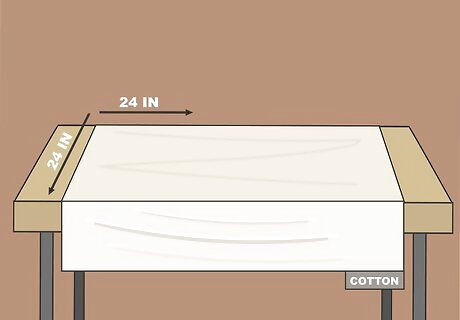
Choose fabric that is slightly elastic. Buy some fabric or repurpose old clothes into socks. Old sweater, shirts, and leggings all work well as sock material. Avoid using material that doesn’t have any stretch, as this makes the socks difficult to put on. Your material needs to be approximately 60 centimetres (24 in) x 60 centimetres (24 in). Any fabric, such as cotton, polyester, or linen, will work as long as has a small percentage of spandex in it. Check the label of the fabric to determine what it is made of.
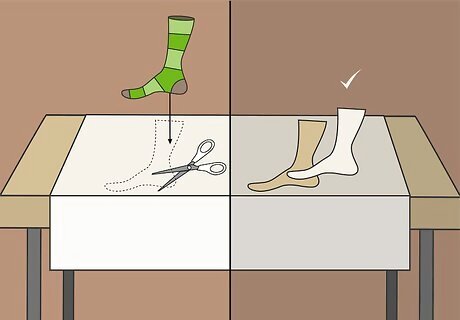
Place a sock over the fabric and cut around it. Find a sock to use as a template and put it on the fabric. Use a pair of fabric scissors to cut around the sock. Cut about 1 centimetre (0.39 in) away from the sock to make the fabric template slightly larger than your sock. This ensures that the socks fit correctly. Repeat this process to create 2 cut-outs in total.
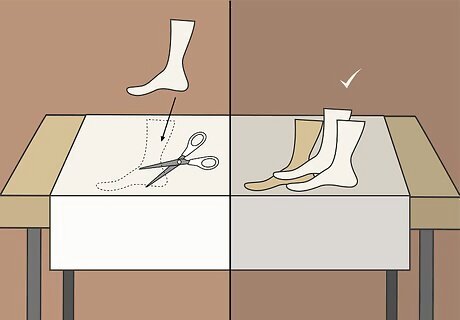
Put the cut-out socks onto the fabric and cut around them. Lie the cut-out socks flat on the fabric and then use fabric scissors to trim around the outline. Try to cut the fabric as close as you can to the cut-out sock to ensure that it is the same size. Then, repeat this step with the other cut-out sock. If you don’t have fabric scissors, use a sharp pair of kitchen scissors instead. This creates 4 cut-outs in total. Using this method ensures that the cut-outs for each sock are identical in size.
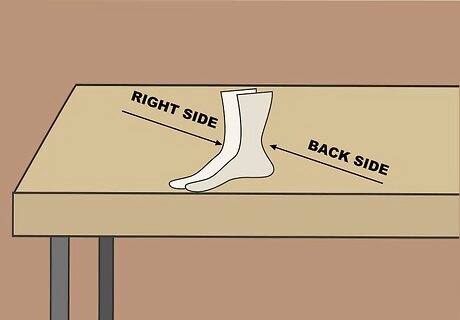
Place the cut-out socks on top of each other with the printed faces together. Place 1 cut-out sock flat on a table with the patterned side of the fabric facing upward. Then, stack the other cut-out sock on top with the patterned side of the fabric facing downward. Don’t worry about which way the fabric faces if it looks the same on both sides. Repeat this process with the other cut-out socks to make 2 socks.
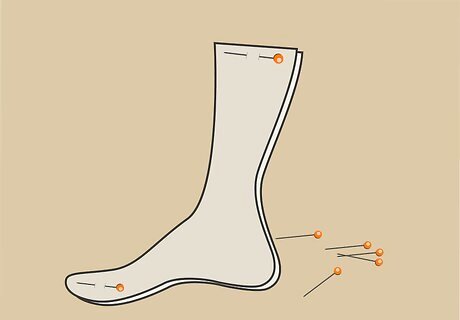
Pin the top and the bottoms of the socks together. Ensure that the socks are stacked perfectly on top of each other and then place a pin down through both layers of fabric at the top of the sock and then back toward to you. Place the pins horizontally so that they sit across the width of the sock. This helps to keep the fabric in place. If you don’t have any sewing pins, use thin needles instead.
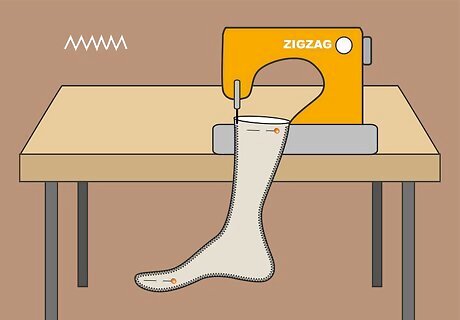
Sew around the edge of the socks with a zig-zag stitch. Set your machine to the zig-zag stitch on the stitching wheel. Then, start at the top of the sock and sew down 1 edge, around the foot, and back up the other edge. Make sure that you don’t sew over the foot hole! Always back stitch before you start sewing to stop the threads from coming loose. If you don’t have a sewing machine, stitch the socks by hand.
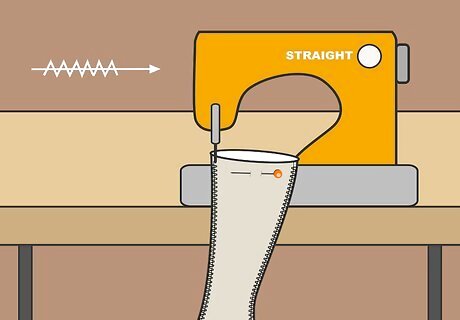
Sew a straight stitch over the zig-zag stitch. This reinforces the zig-zag stitch and helps to prevent the seam from coming undone. Set your machine to the straight stitch, and then sew around the edge and foot seams of your sock to join them together. Try to sew the straight stitch directly on top of the zig-zag stitch to make it as effective as possible. Cut off any loose threads to stop them from itching your feet.
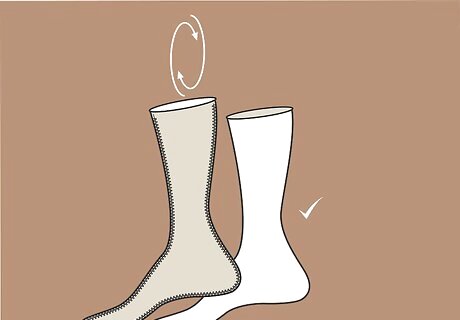
Turn them inside out to reveal the finished socks. Reach into your sock and take hold of the toe. Then, pull it through the leg of the sock to turn it inside out. This hides the seams and reveals the printed side of your fabric. Hand wash your socks to keep them in stellar condition.
Knitting Socks
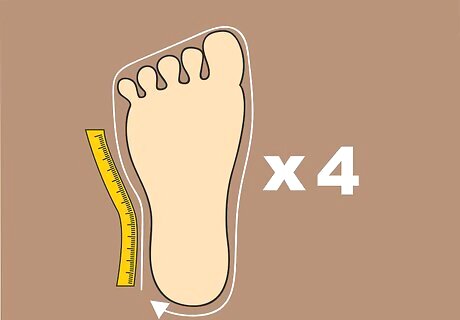
Measure the circumference of your foot in inches and multiply it by 4. Use a sewing tape measure to measure the distance around the middle of your foot. For example, if your foot is 12 inches (30 cm) in circumference, the equation would be: 12 x 4 = 48. This helps to ensure that your socks will be the correct size for you. In order for the equation to work, you need to use inches in the calculation. To convert a measurement from inches to centimetres, divide it by 2.5. These instructions create a heel-less sock. These socks are comfy to wear and much easier to knit than regular socks.
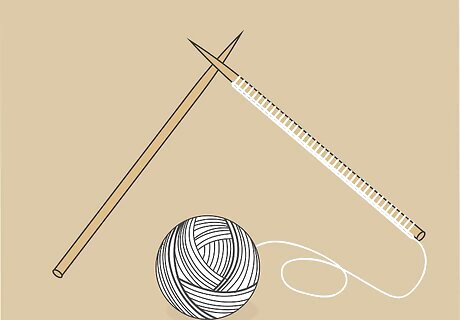
Cast on that number of stitches onto your size US 6 (4mm) needles. Use the number that you calculated to determine how many stitches to cast onto your socks. For example, if you calculated 48, you will need to cast 48 stitches onto your needles. This method works best with sport-weight wool.
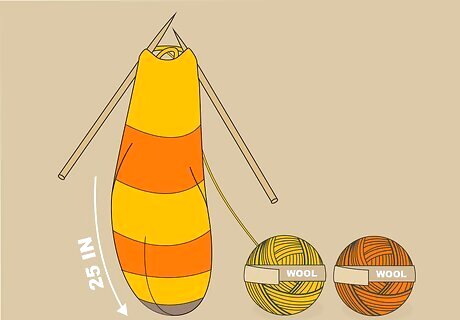
Continue knitting until the material reaches your desired sock length. Use your favourite stitch to knit the wool. Continue to knit until the knitted fabric is long enough to sit over your foot and ankle. If you want the socks to come to your knees, you will need to make them extra long. On average, female shin-length socks are about 20 inches (51 cm) long and male socks are 27 inches (69 cm) long. Ribbed and knit stitch patterns are popular for socks. Hold the knitted material up to your foot and leg to help you estimate the length of the socks. Use the same stitch for the entire sock to make them look cohesive.
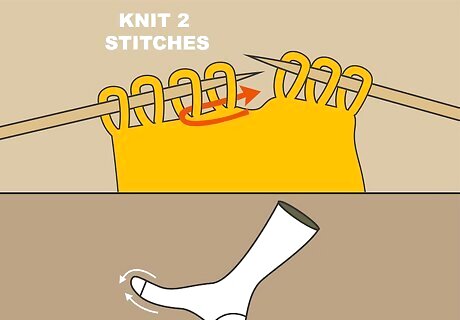
Decrease the number of stitches on each row to create the toe flap. This narrows the end of your sock to make it fit snuggly around your toes. Knit 2 stitches together to decrease the number of stitches. Instead of releasing 1 stitch from your needle, drop 2 stitches instead to decrease the total number of stitches. Drop 2 stitches each row for 5 rows to create a gentle diagonal line at the end of the sock. Hold the knitting over your foot to check that it follows the curve of your toes. If necessary, continue to drop 2 stitches each row until the toe section of the sock is the correct length.
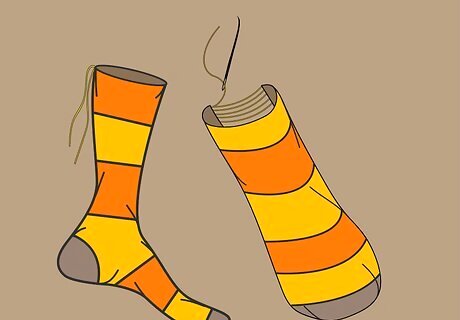
Sew the seam to turn your knitting into a sock. Thread a 25 in (64 cm) piece of wool through a needle and knot it at 1 end. Pull the wool through the top stitch on the right seam of the sock and then pull it through the top stitch on the left seam of the sock to pull them together into a tube shape. Continue to join the seam by threading the wool through each stitch down the entire seam of the socks. Use wool that is the same colour as your socks to help it blend in. A needle with a wide eye works best for this task, as it is easier to thread.
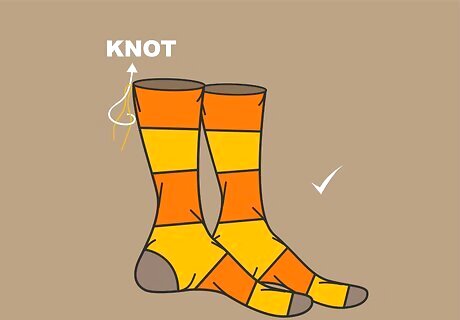
Knot the end of the wool to secure the seams. Tie a tight knot into the end of the wool to stop it from coming loose. If possible, tie the knot on the inside of the sock so that it can’t be seen from the outside of the sock. This helps the socks to look tidy and professional.



















Comments
0 comment